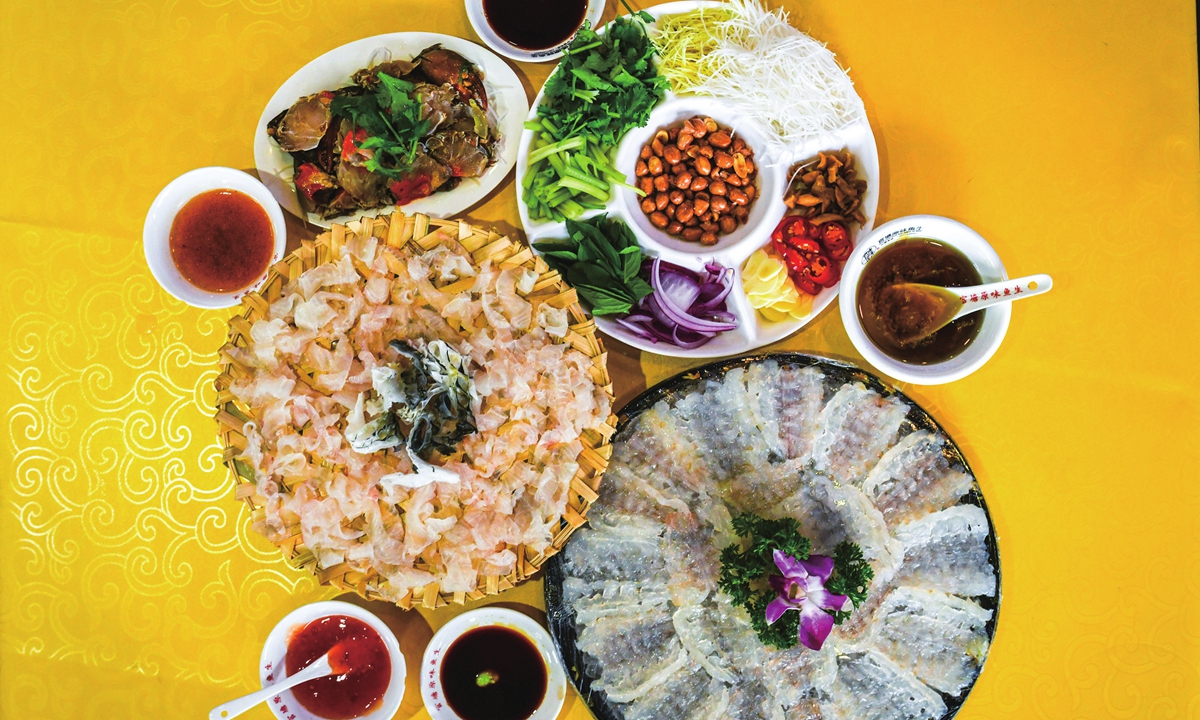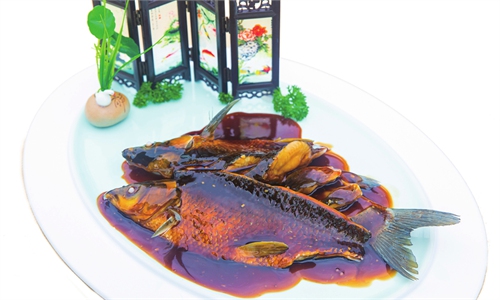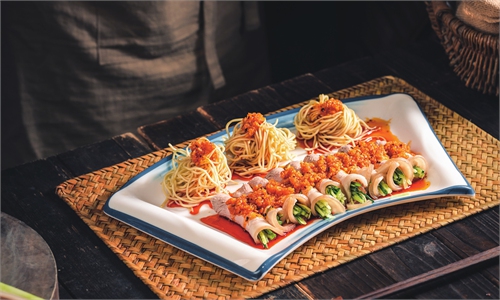ARTS / CULTURE & LEISURE
Exploring culinary tapestry of Chaozhou
A gastronomic odyssey

One of the renowned Chaozhou dishes is marinated raw seafood. Photo: VCG
Chaozhou, a city immersed in a rich cuisine history spanning over two millennia, has recently earned the distinguished title of "Creative City of Gastronomy" from UNESCO.
This recognition, bestowed upon Chaozhou, South China's Guangdong Province at the end ofOctober, positions it as the sixth Chinese city, joining the ranks of Chengdu, Shunde, Macao, Yangzhou, and Huai'an, to be honored with this prestigious designation.
This newfound acknowledgment casts a luminous spotlight on the ancient city, often revered as a culinary sanctuary where the sentiment prevails that a visit to Guangdong (formerly known as Canton) remains incomplete without savoring the unique delights of Chaozhou.
Nestled within the expansive tapestry of Cantonese culinary tradition, Chaozhou cuisine holds an irreplaceable status in the Cantonese culinary tradition, one of China's eight major culinary styles.
Distinguished by its emphasis on freshness, tenderness, and a harmonious blend of flavors that avoid both blandness and overwhelming intensity, Chaozhou cuisine relies on the foundational use of fresh and light seasonings. The cuisine's culinary philosophy is rooted in preserving the inherent essence of ingredients, showcasing minimal use of salt, sugar, and oil as primary cooking components.
Chaozhou's culinary repertoire is dominated by techniques such as steaming, stewing, blanching, stir-frying, braising, and simmering. These methods deliberately eschew heavy-handed approaches like grilling and roasting. In the expansive kingdom of Chinese cuisine, Chaozhou has secured its gastronomic standing through a harmonious blend of diversity and delectability.
From the savory allure of beef hot pot and marinated raw seafood to the delightful simplicity of fish rice, each Chaozhou dish is crafted to embody freshness, sweetness, and invigorating flavors that evoke a nostalgic sense of connection. The renowned Chaozhou flavor isn't merely a hollow accolade, but it has genuinely earned nationwide acclaim.
Sea's bounty
Located on the southern coast of the Chinese mainland and in the eastern corner of Guangdong Province, Chaozhou is where the East China Sea and South China Sea converge, serving as the boundary between Guangdong and Fujian provinces.
The distinctive geography has gifted the city with an abundant array of seafood. The abundance of various aquatic products has become a distinctive feature of the local cuisine.
One of the most celebrated culinary creations born from this maritime abundance is the renowned "fish rice," an integral part of Chaozhou's nocturnal gastronomic scene. Contrary to its name, this dish doesn't actually contain rice.
Local fishermen, residing by the sea, take fish as their daily sustenance, embodying their close connection with this aquatic resource. Freshly caught sea fish is swiftly steamed and cooled, resulting in firm and succulent flesh. With a pair of chopsticks, bringing it to the mouth allows one to taste the sweet fragrance bestowed by the sea.
In addition to fish rice, another local specialty is marinated raw seafood. This technique brings out the utmost freshness in a delightful manner. To create a well-matched sauce, ingredients such as minced garlic, chili flakes, coriander, vinegar, wine, soy sauce, and sesame oil are proportionately combined to make the marinating mixture.
This mixture is then patiently applied to products like fat and succulent raw marinated clams, shrimp, mantis shrimp, and razor clams. After two to three hours, a delectable dish of marinated raw seafood is ready.
The history of Chaozhou people enjoying raw fish slices is deeply rooted. The preparation of raw fish is meticulous, with each slice being thin, translucent, and exquisitely crafted. The Chaozhou-style raw fish is accompanied by a diverse array of small side dishes, including starfruit slices, shredded radish, ginger strips, onions, chili rings, celery, pickled vegetables, garlic slices, and more. Drizzled with sauce, the flavor is truly unparalleled.
A feast of unique offerings
Chaozhou cuisine boasts a rich and distinctive history. Originating in the Han (206BC-AD220) and Tang ( 618-907) dynasties, it spanned over two millennia of history. The unique seafood dishes are just one aspect of the local culinary delights.
Chaozhou's culinary repertoire is an extensive menu boasting over 500 dishes and more than 300 varieties of snacks. Its culinary techniques were officially recognized as the fifth batch of National Intangible Cultural Heritage Representative Projects in 2021, solidifying its place in the culinary heritage of China.
Even if one has never visited Chaozhou, the Chaozhou-style beef hot pot is still well-known, particularly for its meticulous approach to preserving the freshness of the ingredients. The beef is a centerpiece of the Chaozhou beef hot pot.
Ideally, it is best to serve the beef on the table approximately three hours after the slaughter; exceeding fourhours mayaffect the taste. Following this, a beef bone broth is used as the base for the hot pot, and various cuts of fresh beef are then dipped into the broth. These cuts include neck fillet, hanging tender, prime rib, tenderloin, fatty cuts, mixed beef, and offal, each offering a distinct texture and a rich and savory flavor.
For 28-year-old Beijing resident Long, a northern native, the beef hot pot, has rekindled her love for dining. She told the Global Times that the "tenderness" of the beef has captured her tongue.
Long is just one of the many who have been conquered by the Chaozhou cuisine. On China's lifestyle-sharing platform Xiaohongshu, more than 170,000 posts can be found when searching "Chaozhou cuisine."
Chaozhou, with its rich history, diverse culinary techniques, and unparalleled commitment to freshness, stands as a testament to the indomitable spirit of exploration within the realm of gastronomy.
As the city's culinary delights continue to captivate palates and earn global recognition, Chaozhou's gastronomic saga is far from over.



